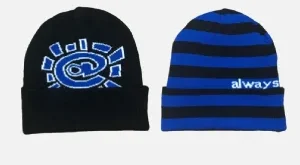Stüssy, a brand that started as a little surfboard organisation in the mid 1980s, has developed into a worldwide streetwear peculiarity. Its ascent to unmistakable quality wasn’t just about garments however about the way of life it addressed — a mix of surf, skate, troublemaker, and hip-bounce impacts that resounded with an age looking to communicate singularity through design. This article investigates the set of experiences, impact, and getting through the tradition of Stüssy as a pioneer in the streetwear business.
The Origins of Stüssy
The narrative of the Stüssy brand with Shawn Stussy, a surfer and skateboarder from Laguna Oceanside, California. In the last part of the 1970s, Stussy was moulding surfboards and offering them to neighbourhood surfers. To recognize his sheets from others, he started marking them with a spray painting roused scribble that would later turn into the notorious Stüssy logo. The logo, a basic yet extraordinary content, before long turned into an image of value and vagueness in the surf community. Shawn Stussy’s imagination wasn’t restricted to surfboards. He began printing his particular shirt, caps, and shorts, which he sold close by his surfboards. These early clothing contributions were straightforward, yet they conveyed a similar laid-back, insubordinate soul that characterised surf culture. By the mid-1980s, the interest in his apparel had developed past the surf shops of Southern California. Perceiving the potential, Shawn cooperated with Candid Sinatra Jr. (no connection to the renowned vocalist), a financial specialist who assisted him with growing the brand into new business sectors. This association denoted the birth of the Stüssy brand.
The Rise of Streetwear
During the 1980s, streetwear was still at its outset, however, the components were at that point set up. Hip-bounce was rising out of the Bronx, skating was filling in prominence, and underground rock was rocking the boat. Stüssy was quite possibly the earliest brand to perceive the capability of these subcultures, mixing them into a durable style that spoke to a wide audience. Stüssy’s plans were not normal for anything else at that point. The brand blended components of surf culture with underground rock, hip-bounce, and skating, making a one-of-a-kind style that opposed order. The notorious Stüssy logo turned into an honourable symbol for those in the loop, an image of having a place with a worldwide local area of similar individuals. One of the keys to Stüssy’s prosperity was its capacity to associate with powerhouses inside these subcultures. Rather than conventional publicising, the brand depended on informal and its associations with performers, specialists, and skateboarders to fabricate its standing. This grassroots methodology assisted Stüssy with keeping up with its legitimacy and validity, even as it ventured into new business sectors.
Global Expansion and the International Stüssy Tribe
By the last part of the 1980s and mid-1990s, Stüssy had turned into a worldwide peculiarity. The brand opened lead stores in significant urban communities like New York, Tokyo, and London, each turning into a social centre for the nearby streetwear scene. These stores were something other than retail spaces; they were gathering places for the “Global Stüssy Clan,” a free aggregate of specialists, performers, and creatives who were joined by their affection for the brand. The idea of the Worldwide Stüssy Clan was key to the brand’s character. It wasn’t just about selling garments; it was tied in with making a local area. Individuals from the clan, including compelling figures like Hiroshi Fujiwara, James Jebbia (who might later be viewed as Incomparable), and Eddie Cruz, helped spread the Stüssy gospel all over the planet. They facilitated gatherings, teamed up on projects, and wore Stüssy hoodies as an image of their common values. This feeling of the local area and joint effort put Stüssy aside from different brands. It was quite possibly the earliest organisation to embrace the possibility of the “drop,” delivering restricted version items in little amounts, which made a need to keep moving and restrictiveness. This system, presently normal in the streetwear world, helped construct a devoted following and guaranteed that Stüssy items remained profoundly desired.
Stüssy’s Influence on Fashion
Stüssy’s effect on the design business couldn’t possibly be more significant. It was quite possibly the earliest brand to obscure the lines among streetwear and high design, preparing for different brands like Incomparable, A Washing Chimp, and Grayish. Its coordinated efforts with brands like Nike, Comme des Garçons, and Dior further set its status as a trailblazer in the industry. One of the signs of Stüssy’s prosperity has been its capacity to remain important in a consistently evolving industry. While many brands rise and fall with patterns, Stüssy has kept up with its situation by remaining consistent with its underlying foundations while likewise developing with the times. Its plans have stayed new and imaginative, interesting to both long-term fans and new ages of streetwear enthusiasts. Stüssy’s effect on style stretches out past its clothing. The brand has likewise been a stage for rising craftsmen and originators, giving them a space to exhibit their work and contact a more extensive crowd. This obligation to encourage inventiveness has made Stüssy something beyond a dress brand; it’s a social foundation.
Legacy and Enduring Relevance
More than forty years since its establishment, Stüssy remains a foundation of the streetwear world. The brand’s capacity to offset legitimacy with advancement has permitted it to get through where others have floundered. It has figured out how to remain pertinent by remaining consistent with its basic beliefs — local area, innovativeness, and an insubordinate soul — while likewise adjusting to the changing scene of fashion.The ascent of the web and virtual entertainment has just enhanced Stüssy’s impact. The brand’s coordinated efforts, restricted drops, and one of a kind pieces are enthusiastically pursued by gatherers and design lovers all over the planet. The optional market for Stüssy items is flourishing, for certain things getting exorbitant costs because of their unique case and authentic significance. Stüssy’s heritage is apparent in the endless brands and creators it has propelled. The streetwear scene today, with its accentuation on cooperation, restricted versions, and a solid feeling of the local area, owes a lot to the exploring endeavours of Stüssy during the 1980s and 1990s. The brand’s thriving has shown that streetwear isn’t just a passing example anyway, a genuine and strong power in the style business.
Conclusion
Stüssy’s brand from a little surfboard organisation to a worldwide streetwear symbol demonstrates the force of innovativeness, legitimacy, and local area. Shawn Stussy’s vision of a brand that rises above limits and interfaces with individuals across various societies and subcultures has become a reality. Today, Stüssy remains an image of all that makes streetwear extraordinary — its capacity to improve, to unite individuals, and to rock the boat. As the brand continues developing, it remains a brilliant illustration of how style can be something other than dress; it tends to be a lifestyle.
 Personal Finance and Attractive Interest Rates Unlock Smart Savings with Low Rates and Expert Financial Tips
Personal Finance and Attractive Interest Rates Unlock Smart Savings with Low Rates and Expert Financial Tips







